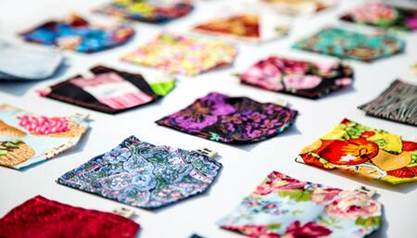Ciara Cates from Patagonia recently spoke with Ben Galphin on one of digital show webinars. Ben is the chief innovation outsider from Outsider Innovation and feels that “having a measurable impact reduction is the most important component” to future-proofing your brand. We discuss this and other vital factors to future-proofing your brand in this article.
Building your brands sustainability roadmap
What sustainability issues do your brand feel most strongly about? Some brands lean into fair trade policies and investment in people, whilst others feel strongly about recycling waste or water and energy impact. Don’t try to do everything at once as it will be too challenging to execute. It’s better to start with what you feel most passionate about and get your team on board and focused from the beginning. What are you most able to capitalise on first considering the strengths of your own supply chain and team resources and skills?
Finding your “Hero” product
Ciara suggests choosing one item that you will give a “sustainability upgrade” which will provide a great marketing story for your brand. In the beginning, make it as straightforward as possible for yourself. It’s best to focus on a simple garment such as a t-shirt, socks, or a long-sleeved top, then a complicated garment such as a winter coat. A winter coat will have many components and it may be too complex to launch with. Your ‘hero’ item should have decent production volumes with sustainable fibres that you can certify easily.

Measurable impact reduction
You need to prove that your sustainability efforts are having an impact in some way. A great place to begin is with the highly reputable Higg Index. The Higg Index offers a host of tools that enables brands at every stage in their sustainability journey to measure social and environmental sustainability performance. Developed by the SAC (Sustainable Apparel Coalition), the Higg Index is the leading assessment for standardised supply chain sustainability assessment. It points you to the appropriate certification you could have to depend on the fibre you choose. If your supplier is offering a certification not mentioned on the Higg Index, you should be suspicious of its claims.
In the beginning, it's always better to go with mainstream and widely known certifications, as your supply chain is more likely to be able to provide them for your fibres. Check with your factory what audits/certifications they have gone through for other brands to help give you some idea if it matches with your requirements. Because small brands won’t have the same buying power to request exactly what they want so they may need to look around for a factory that is offering what they require. Alternatively, if you are a little bit flexible with your fibre needs, you may even be able to piggyback onto the huge supply chain of a larger brand. It will always be more efficient if you can work with a fibre that already has a huge scale and could potentially offer massive savings and faster production turnaround.
Longevity and end of life factor
You can have a line of organic cotton naturally dyed t-shirts. But if that t-shirt falls apart after 10 washes, then it simply isn’t a sustainable product. For this reason, it is better to invest more in quality materials that will last longer.
Also, always consider the circularity of the garments you create. It’s inexcusable that 300,000 tonnes of unwanted clothes are binned, not recycled, every year. Circular fashion means that every part of the life span of a garment is cyclical – it starts with its design and how much longevity it has, then onto the sustainability of the materials, then its production - is it fair and ethical to minimise damage to the environment? Once the piece has become tired, can it be repaired or recycled instead of going to a landfill?
Fabric blends are appealing as combined they offer increased beneficial properties, however, Ben states that we need to take a look at their end-of-life factors. How easy will they be to recycle if they contain multiple fibres, some of which can be recycled, some of which cannot?
Ask questions
Establish connections with larger brands you admire and don’t be afraid to ask questions. The fashion industry is very collaborative when it comes to sustainability matters. The current age of sharing has made connection and collaboration an important tool for start-up businesses working within the fashion industry. The cross-over of marketing and resources can be mutually beneficial for all parties involved by the exposure of each other’s networks.
This article has not been edited by Fibre2Fashion staff and is re-published with permission from synzenbe.com







Comments